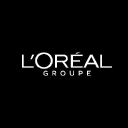Is Skin Care The Sole Driver Of L’Oreal’s Revenue?
L’Oreal’s (OTCMKTS: LRLCY) total revenue has grown from $27.58 billion in 2016 to $30.95 billion in 2018, on the back of strong demand growth in emerging markets, and higher pricing of their products. This growth was largely driven by a $2 billion increase in skin care revenue, which is L’Oreal’s largest segment, bringing in $9.83 billion in 2018. We expect L’Oreal’s total revenue to grow to $34.86 billion by 2020, on the back of new product launches and consistent demand growth.
Takeaway
- L’Oreal’s skin care division, which offers daily care and anti-aging products, is expected to contribute $11.06 billion to total revenue in 2019, making up 34% of L’Oreal’s $32.76 billion revenue estimate.
- The make up and hair care divisions, which equal 27% and 26% of total revenue, respectively, are expected to bring in a combined $17.39 billion in 2019.
- However, the skin care segment alone is expected to add $4.6 billion between 2016 and 2020, which is 63% of the additional $7.28 billion that the company is expected to bring in over this period.
- This strong revenue growth has been key to L’Oreal’s 50% price appreciation since December 2016, further helped by growing margins.
- In our interactive dashboard L’Oreal Revenue: How Does L’Oreal Make Money?, we discuss L’Oreal’s business model, followed by sections that review past performance and 2020 expectations for L’Oreal’s revenue, and include comparisons with Estee Lauder, a close competitor.
A look at L’Oreal’s segments and their contribution to total revenue
- Which Beauty Stock Is A Better Pick – L’Oréal Or Ulta?
- Down 25% This Year Is Estée Lauder A Better Pick Over L’Oréal?
- Is There More Room For Growth In L’Oreal Stock?
- After Underperforming The Markets, Can L’Oreal Stock Rally?
- L’Oreal Stock Poised For Bounce Back After Rough Month?
- After Dismal Performance Last Month, L’Oreal Stock Looks Set To Rebound

(A) Skin care revenue to grow by $2.61 billion over the next 2 years, with its share of total revenue to be about 36% by 2020
- L’Oreal’s product portfolio ranges from popular luxury brands like Lancome, Giorgio Armani, YSL, Biotherm, and Kiehl’s to popular mass brands like L’Oreal Paris, Maybelline, and Garnier.
- L’Oreal’s skin care revenue has grown from $7.85 billion in 2016 to $9.83 billion in 2018, on the back of strong demand growth in emerging markets for both, the luxury as well as mass brands.
- We further expect skin care revenue to grow to $12.45 billion by 2020.
(B) Make up revenue to grow by $870 million over the next 2 years, with its share of total revenue to be about 27% by 2020
- L’Oreal’s makeup segment has grown from $7.28 billion in 2016 to $8.48 billion in 2018, on the back of an increase in demand for L’Oreal’s make up products.
- New product launches also helped drive up revenue from this segment.
- We further expect make up revenue to grow to $9.35 billion by 2020.
(C) The hair care segment is expected to add $250 million over the next 2 years, taking its share of total revenue to 25%
- The hair care segment has seen revenue drop from $8.63 billion in 2016 to $8.4 billion in 2018, largely due to a lack of product innovation.
- We expect things to improve slightly by 2020, taking revenue from this segment to $8.65 billion.
(D) Fragrance revenue to grow by around $170 million over the next 2 years, to make up about 12% of the total revenue estimate for 2020
- Revenue from the fragrance segment has grown from $3.82 billion in 2016 to $4.24 billion in 2018, driven by L’Oreal’s strong fragrance line.
- We expect this steady growth to continue, driving total revenue to $4.41 billion by 2020.
What’s behind Trefis? See How it’s Powering New Collaboration and What-Ifs
For CFOs and Finance Teams | Product, R&D, and Marketing Teams
Like our charts? Explore example interactive dashboards and create your own.
